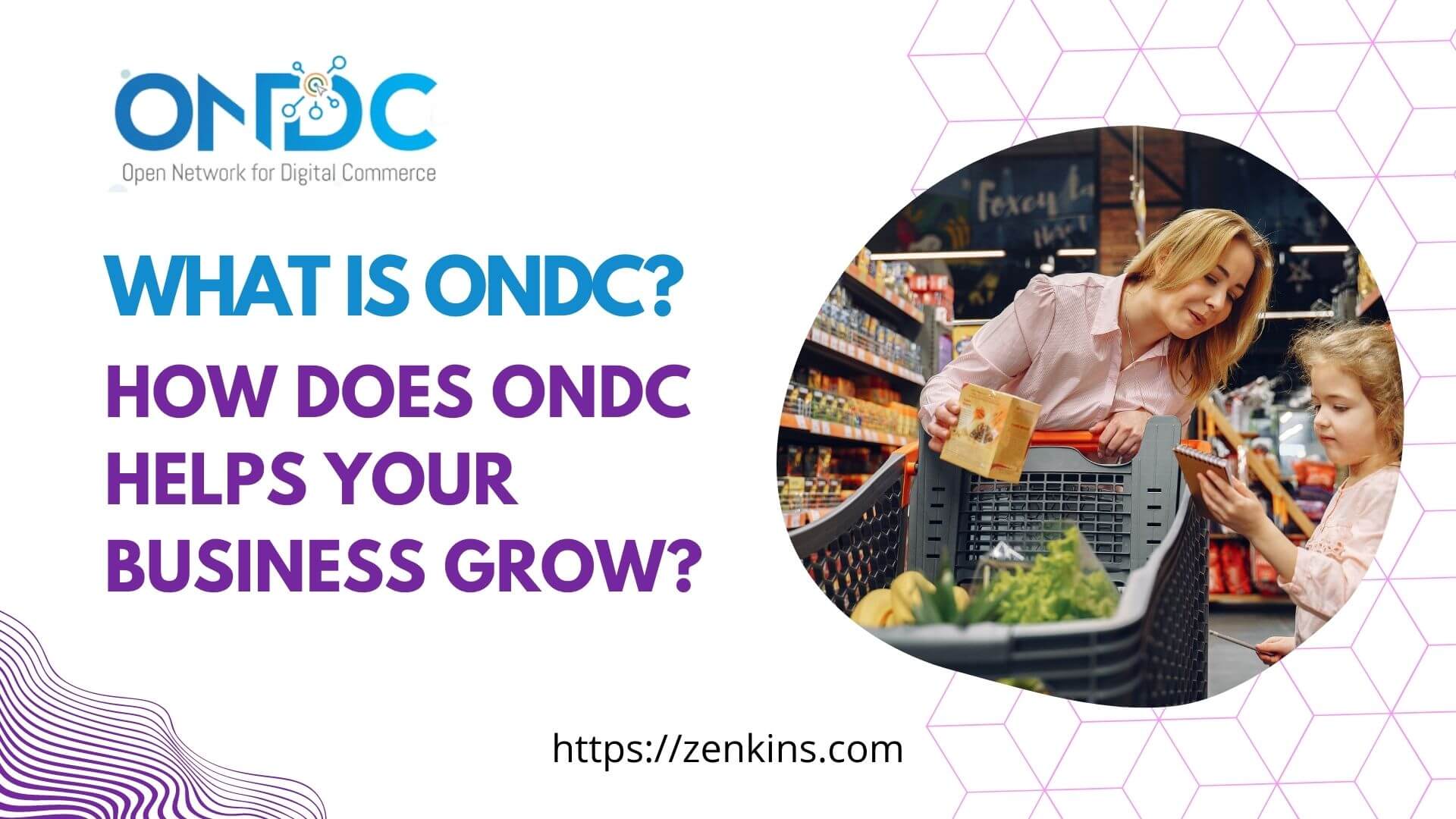What is ONDC? And how does ONDC helps your business grow?
Someone with an Online Payment account can now send money to someone with a digital payment account if they use the same Unified Payments Interface or UPI platform. The government is planning a similar experiment in the e-commerce sector, which is now dominated by e-commerce sites. Many countries seek to establish an Open Network for Digital Commerce (ONDC) to democratize digital commerce (e-commerce) and provide alternatives to private e-commerce sites. The Open Network for Digital Ecommerce, or ONDC, intends to give small firms an equal playing field. A steering committee has been established to oversee the implementation of the ONDC project.
ONDC
According to certain news organizations, the ONDC effort was supported by the commerce ministry to promote open networks for all elements of the trade of goods and services over digital or electronic networks. ONDC will be based on an open-source strategy with available specifications and open network protocols that are not tied to any platform. According to the commerce ministry, the foundations of ONDC will be open protocols for all aspects of the entire chain of activities in the exchange of goods and services. Like HTTP for internet information exchange, a simple mail transfer protocol for email exchange, and a unified payments interface for payments.
What does open-source mean?
ONDC’s goal is to promote open networks built using open-source techniques, available specifications, and network protocols that are not tied to any platform. Making a process or piece of software open source means that the technology or code used is freely available for anyone to use, redistribute, and change. While the iOS operating system is closed source, i.e., it cannot be legally modified or used, the Android operating system is open-source, allowing smartphone manufacturers to customize it for their own devices.
Features
The ONDC will utilize a format comparable to the Unified Payments Interface (UPI). Traders will be able to save their data, develop a credit history and reach out to consumers through the network. According to the government’s official statement, ONDC will take steps to guarantee the network’s confidentiality and privacy. Participants will not be required to provide transaction-level data with ONDC. The following are some of the program’s primary objectives and features:
- Providers and customers would be able to use any suitable application to communicate information and execute transactions over ONDC.
- Under the ONDC, merchants will be able to save their data to build credit histories and reach out to customers.
- The implementation of ONDC, which is intended to be similar to the Unified Payments Interface (UPI), might bring e-commerce platforms’ various operational features to the same level.
- Buyers and sellers can transact on ONDC regardless of connecting with a specific e-commerce portal.
- Cataloging, inventory management, order management, and order fulfillment would be standardized operations using ONDC protocols. As a result, instead of being governed by specific platform-centric policies, small firms would be able to use any ONDC compliant application. This will give small businesses many ways to be found on the internet and conduct business. It would also make digital means more accessible to individuals who are not already using them.
Consumers can potentially discover any vendor, product, or service through this platform by using any ONDC-compatible application or platform, giving them more options.
How does this work?
The ONDC platform lies in the interfaces where buyers and sellers interact. Online payment now hosts the buyer-side interface, while other firms host the seller-side interface.
When a buyer searches for an item on the online payment app, the app will connect to the ONDC platform, connecting it to seller-side interfaces that list all the sellers who have listed that particular item. Other backend partners on the ONDC will include logistics service providers, enterprise resource planners, and e-commerce shop hosting service, providers.
Significance of ONDC
The ONDC is planned to digitize the whole value chain, standardize operations, stimulate supplier inclusion, improve logistical efficiency, and boost customer value. When the ONDC is completely implemented and controlled, all e-commerce businesses in many countries, regardless of brand, will be required to adhere to the same requirements as Android-based mobile devices. This would benefit smaller online stores and newcomers by improving discoverability, interoperability, and inclusion. It will allow suppliers and customers to drive innovation and change businesses in sectors like retail, food, and mobility by breaking the monopoly of major platforms.
Businesses are expected to benefit from transparent laws, low investment, and lower business acquisition costs. Time-to-market and time-to-scale are also likely to be greatly shortened. Larger e-commerce behemoths are protesting since they have already invested heavily in research and development and their procedures and technology deployment.
Potential benefits of ONDC
For vendors:
- Increased buyer access
- Improved product discoverability and cost
- Flexibility in terms of digital visibility due to different options
- Lower operating expenses
- Additional options for value chain services such as logistics and fulfillment are available.
For purchasers:
- More merchants to choose from, resulting in more options
- Access to hyper-local retailers means better service and faster deliveries.
- Improved customer service
For technology platforms
- New ways for start-ups to foster innovation in different parts of the network
- Buyer and seller-side applications provide access to the rise of digital commerce.
- Time-to-market and time-to-scale have been reduced.
- Focus on niche aspects, and other partners can concentrate on various elements
Bottom line
For leading e-commerce companies, reconfiguring will be challenging because that requires a complete overhaul of their systems and the loss of advantages such as control over the user experience and consumer behavior data. It will allow the government to control what is sold and purchased. Recent government legislation in UPI set a 40 percent market share limit for any service provider, effectively restricting market leader online payment progress. Whether ONDC will provide a fair playing field advantage to physical world stores is also uncertain.




